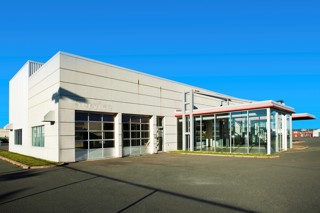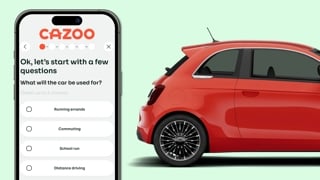Digital Vision for Mobility, a recent report from Atos into the future of mobility, explores how the movement of people and goods is vital to a successful economy, with transformation key to meeting evolving demand.
In the report experts from Atos and the wider industry share their insights into the optimisation of the new technology.
Here, Ben Foulser from KPMG discusses how Mobility as a Service (MaaS) will transform mobility across all modes of transport, including automotive.
Recent years have seen a marked shift away from private vehicle ownership, particularly in urban areas.
KPMG’s latest Global Automotive Executive Survey found that 39% of surveyed consumers say ownership of vehicles is decreasing and half of those surveyed expect that 50% of car owners will no longer want to own a personal vehicle by 2025.
Similarly, according to UK Department for Transport figures, the proportion of 17 to 20-year-old men in England holding a full UK driver’s licence has fallen from 51% in the mid-90s to just 29% in 2017 (and from 81% to 69% of men aged 21-29).
These changes will likely be exacerbated by the introduction and consumer acceptance of mobility ‘as a service’ as an alternative to owning and maintaining their own vehicle.
Unprecedented movement
In essence, the concept of Mobility as a Service encapsulates the move away from personal vehicle ownership towards service-based transport; this includes the aggregation of multiple transport modes, as well as on-demand mobility.
Most notable in this space has been the rapid emergence of the digitally-enabled on-demand private car hire firms such as Uber and Lyft that are now so commonplace in cities all over the world; these are now expanding their platforms from their established mode of cars into mass public transport and ePersonal mobility (such as bike and scooter hire).
As it matures, MaaS will facilitate unprecedented ease and levels of movement for the benefit of a range of stakeholders: for transport operators and authorities to achieve their corporate objectives; for Government to deliver on its travel policies; and for consumers looking for convenient, comfortable and cost-effective mobility.
In its most developed form, MaaS would be presented to consumers through a single app so that people could move from place to place using and paying for different modes of transport seamlessly.
They could use the app, or a computer or kiosk, to enter their travel requirements and preferences, and see journey choices that fully integrate public and private transport; they could make one payment automatically by a method of their choice; and they would have ready access to plenty of on-demand travel options along with real-time integrated journey and planning information.
Leveraging data
The core technologies for making MaaS a reality exist: IoT and artificial intelligence have already found their way into everyday consumer mobility in the form of smartphones.
Connected devices and digital platforms deliver services such as taxi and shared car fleet apps whereby consumers can instantly see the location and availability of vehicles.
These kinds of offers will continue to diversify and expand at pace thanks to the increasing availability of low-cost sensors and the ubiquity of high-speed over-the-air communications, including 5G.
For new and established transport operators and transport authorities, MaaS will be a platform to optimise utilisation and yield of their asset bases.
As more and more assets become connected, increasing volumes of real-time data about their location, availability and condition will help companies to transform the way transport infrastructures are managed through, for example, predictive and pre-emptive repair and maintenance.
Add in a layer of artificial intelligence and companies can optimise mobility services more dynamically and proactively than ever before.
This will benefit consumers before they travel (helping to predict movement and suggest routing, products and services) and during travel (determining and avoiding likely results of delays).
With multiple modes of transport optimised, congestion will be minimised and air quality and passenger comfort enhanced.
Far-reaching integration
In time, connected transport infrastructure, assets and data will give travel operators unprecedented operational insights, such as understanding how demand and use changes with performance and quality of service.
Who knows? Data about the condition of assets could in turn drive new business models, such as consumers being offered a free ride if they’re prepared to clean a vehicle.
While there is already plenty of innovation, we are only at the start of the journey to MaaS. Its full potential can only materialise when there is far-reaching integration with and between mobility systems and operations.
This requires a critical mass, both of customers and mobility services providers, which in turn requires the necessary technical, commercial and governance frameworks to be defined.
Once baseline services can be established, creativity and collaboration will be needed across the mobility sector, and with government and digital providers.
MaaS is a completely new paradigm: it has the potential truly to transform the possibilities of mobility for all.
Author: Ben Foulser, Associate Director, Infrastructure Advisory Group, KPMG LLP
- To learn more about MaaS and urban mobility policies, consider attending the next Smart Transport Conference, at the ICC in Birmingham, on September 18, 2019.

















Login to comment
Comments
No comments have been made yet.